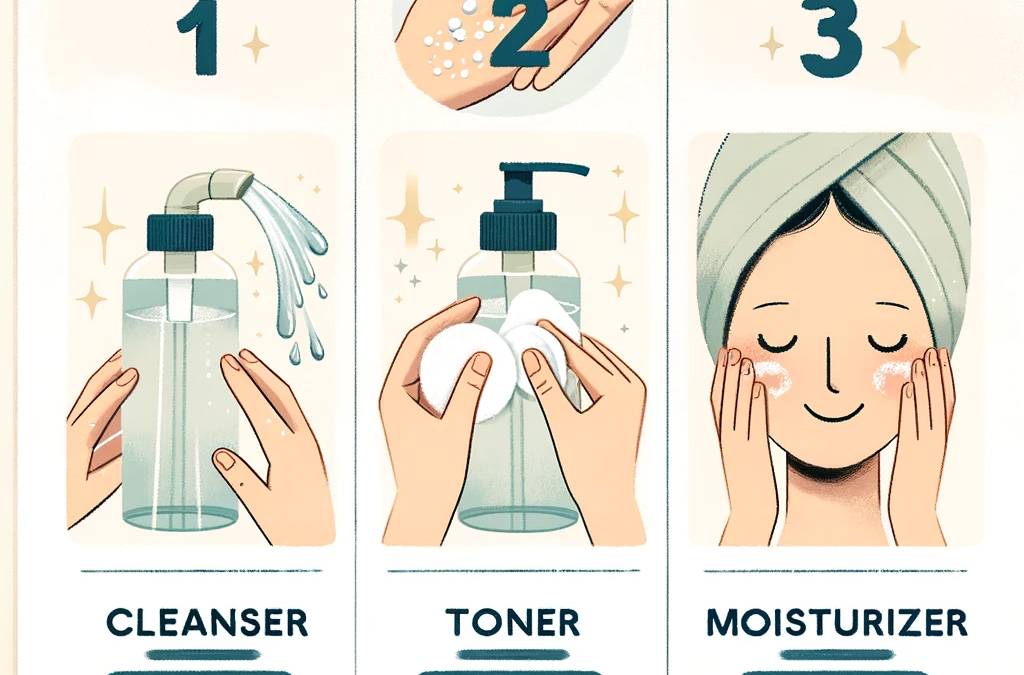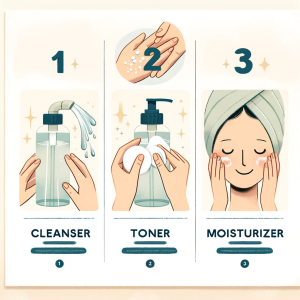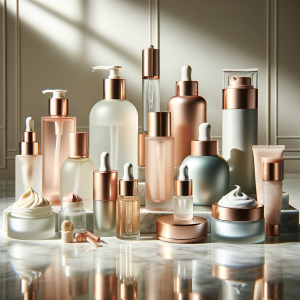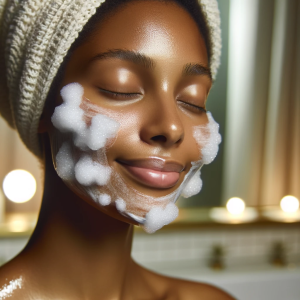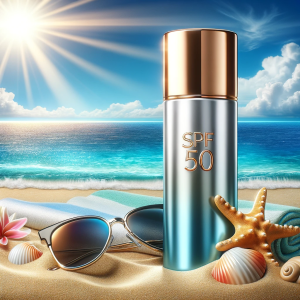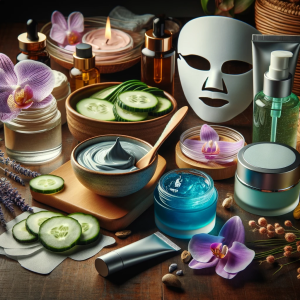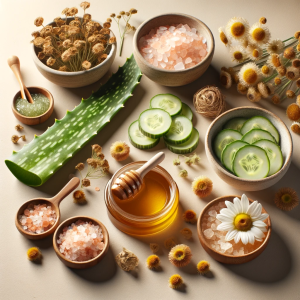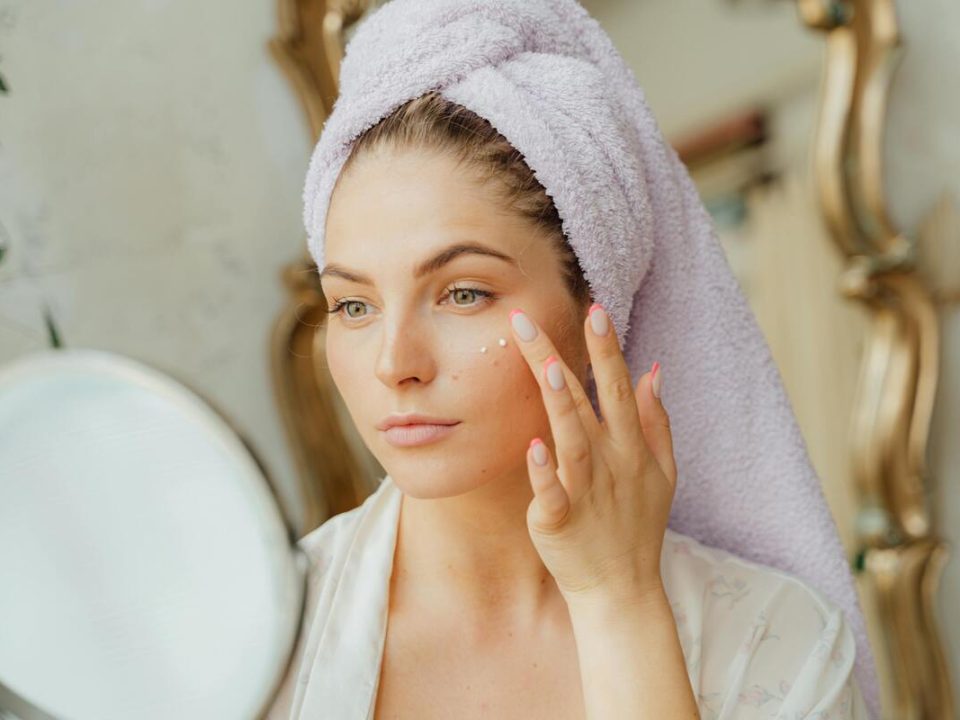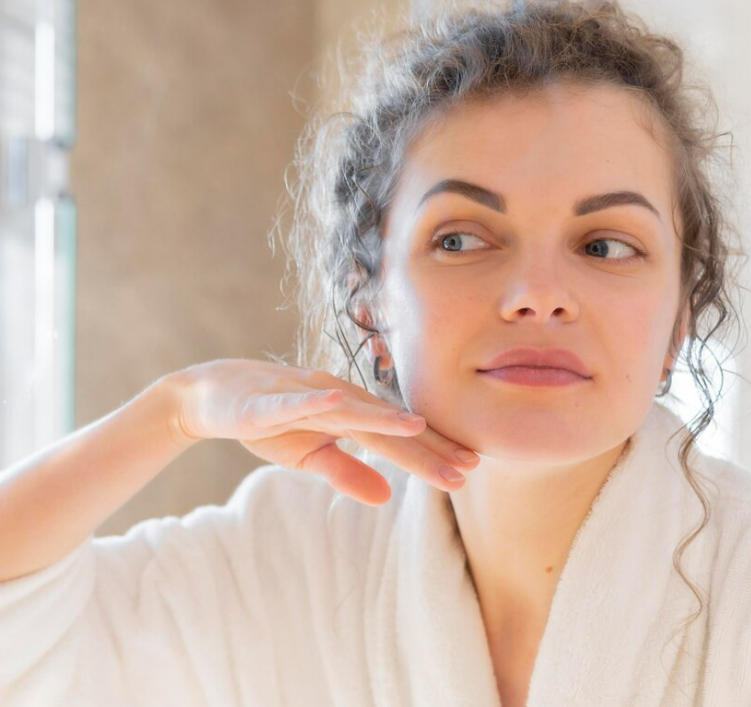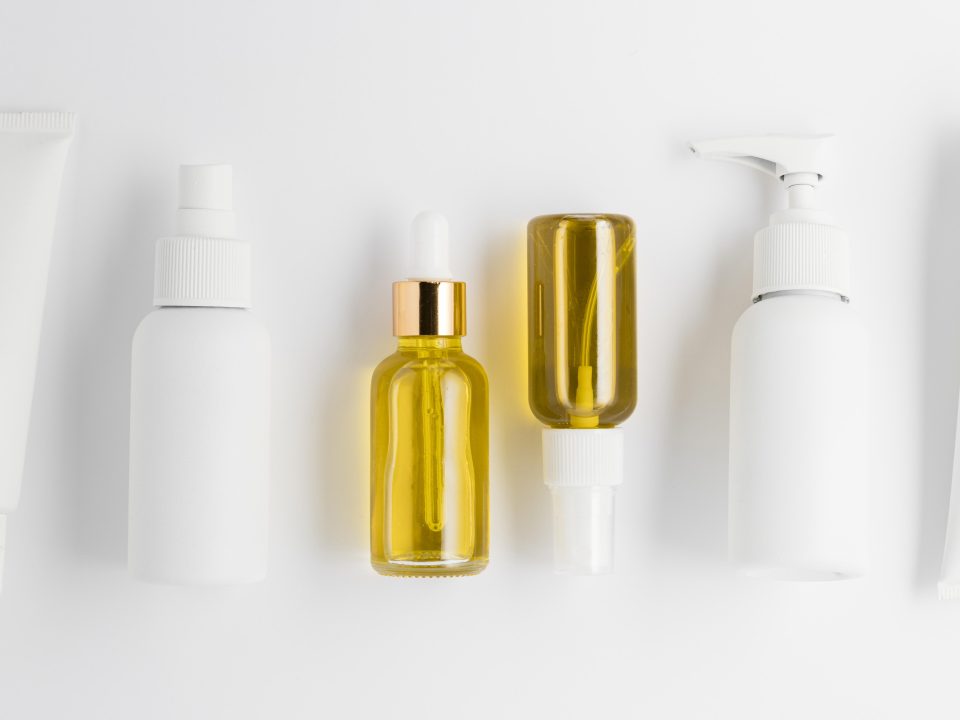
Vitamin C Types in Products Explained
July 4, 2023
How Often Should One Use An Under-Eye Serum/Cream?
November 9, 2023Skincare is more than a beauty ritual; it’s a critical aspect of personal health and well-being. A proper skincare routine can not only enhance one’s appearance but also serve as a protective barrier against environmental aggressors like pollution and UV rays. The skin is the body’s largest organ, and its condition often reflects our overall health. It plays a vital role in protecting our body, regulating temperature, and providing sensory information. The importance of skincare cannot be overstated, as it helps maintain the skin’s integrity, encourages skin renewal, and prevents potential skin issues.
Every individual’s skin is as distinctive as their fingerprint, and acknowledging this individuality is key to nurturing it properly. A person’s age, skin type, hormonal changes, and even climatic conditions play a significant role in shaping their skincare routine. A routine that works for a teenager may not be suitable for someone in their fifties. Similarly, dry, oily, and combination skin types each have specific requirements.
Understanding Your Skin Type (normal, dry, oily, combination, sensitive)
The first step to an effective skincare regimen is understanding the unique landscape of your skin, which falls into one of several categories:
-
Normal Skin: This type is characterized by a well-balanced sebum (oil) and moisture content, leading to a complexion that is neither too oily nor too dry. It has a regular texture, no severe sensitivities, and a clean, soft appearance.
-
Dry Skin: Dry skin can feel tight and may suffer from scaling or flaking. It is often characterized by a lack of moisture in the epidermis and can appear dull, particularly around the cheeks and eyes.
-
Oily Skin: This skin type has excess sebum production, leading to a shiny surface and often enlarged pores. Oily skin is prone to develop acne, blackheads, and other blemishes.
-
Combination Skin: Those with combination skin experience a mix of oily and dry patches—typically an oily T-zone (forehead, nose, and chin) and dryer cheeks. This skin type requires a balance of hydration and oil control.
-
Sensitive Skin: Sensitive skin is prone to reactions such as redness, itching, or rashes. It may react to certain ingredients in skincare products or environmental triggers.
The significance of knowing your skin type for a personalized skincare routine
Identifying your skin type is not a mere exercise in categorization—it’s the foundation upon which a tailored skincare routine is built. Knowing whether your skin is oily, dry, or somewhere in between affects every choice, from the type of cleanser you use to the kind of moisturizer you apply.
For example, rich, emollient creams may benefit dry skin but could exacerbate oiliness or acne in oily skin types. Conversely, products designed to strip away oil could strip dry skin of its remaining moisture, leading to irritation and increased sensitivity.
How to determine your skin type
To accurately determine your skin type, follow these steps:
-
Cleanse your skin: Use a gentle cleanser to wash your face, then pat it dry. This will remove makeup, dirt, and oil, providing a clean base for your assessment.
-
Wait for an hour: After cleansing, leave your skin untouched for about an hour. This will allow it to return to its natural state, its characteristics unaltered by any products.
-
Observe: After the hour has passed, examine your skin in a mirror. Look for any shine on your forehead, nose, and chin (indicative of oily skin) or tight, flaky patches (signifying dry skin). Both signs together could suggest combination skin.
-
Feel: Pay attention to how your skin feels. Oily skin may feel greasy, while dry skin may feel tight or rough.
-
Blotting sheet test: If you’re still uncertain, press a clean blotting paper on different areas of your face. Hold the sheet up to the light to determine how much oil is visible. If the sheet picked up little to no oil, you likely have dry skin. If the blotting paper reveals oil from the forehead and nose areas, your skin is probably combination or oily.
-
Sensitivity check: Lastly, consider whether your skin is sensitive. If it often becomes red, itchy, or reactive to beauty products, you may have sensitive skin.
Through understanding your skin type, you can embark on creating a skincare routine that not only addresses your skin’s specific needs but also adapts as those needs change with age, climate, and lifestyle.
The Fundamental Steps of Skincare
Cleansing
-
The role of cleansers in skincare:
-
Cleansing is the cornerstone of any skincare regimen. It’s essential for removing impurities such as dirt, excess oil, makeup, and dead skin cells. A cleanser also prepares the skin to absorb other products effectively.
-
-
How to choose a cleanser:
-
Selection should be based on skin type: gentle, hydrating cleansers for dry skin; foaming or gel cleansers for oily skin; and mild, balanced cleansers for combination skin. Sensitive skin types should look for soothing ingredients that reduce the potential for irritation.
-
-
Tips for proper cleansing techniques:
-
Use lukewarm water to avoid irritation. Massage the cleanser in a gentle, circular motion, then rinse thoroughly. Avoid scrubbing harshly, which can strip the skin of its natural oils and cause irritation or dryness.
-
Toning
-
What toners do for your skin:
-
Toners are designed to restore the skin’s pH balance after cleansing, remove any last traces of dirt or makeup, and provide a layer of preparation for moisturizers and other treatments.
-
-
The benefits of including a toner in your routine:
-
Regular use can refine pores, hydrate the skin, and provide additional cleansing. Some toners are formulated with active ingredients to target specific concerns like aging or acne.
-
-
Application tips for maximal benefits:
-
Apply toner to a cotton pad and gently sweep it across the face and neck. Alternatively, some toners can be spritzed directly onto the skin. Allow it to dry before applying other products.
-
Exfoliating
-
Importance of removing dead skin cells:
-
Exfoliation is key to removing dead skin cells that can clog pores and leave the skin looking dull. It promotes cell turnover and can improve texture and tone.
-
-
Different types of exfoliants (chemical vs. physical):
-
Chemical exfoliants, such as AHAs and BHAs, dissolve dead skin cells without scrubbing. Physical exfoliants use small particles or tools to physically remove debris from the skin’s surface.
-
-
Frequency of exfoliation and precautions:
-
Over-exfoliation can damage the skin barrier, so it’s generally recommended to exfoliate 2-3 times a week for oily or combination skin and once a week for dry or sensitive skin. Always follow with moisturizer and sunscreen to protect the newly exposed skin cells.
-
Moisturizing
-
The function of moisturizers in maintaining skin health:
-
Moisturizers help to hydrate and seal in moisture, ensuring that the skin remains supple and protected from environmental stresses. They can also aid in repairing the skin’s barrier function.
-
-
Selecting the right moisturizer for your skin type:
-
Oily skin may require lightweight, non-comedogenic formulas, while dry skin may benefit from richer creams. For sensitive skin, fragrance-free and hypoallergenic options are recommended.
-
-
The role of occlusives, humectants, and emollients:
-
Humectants draw water into the skin, occlusives create a barrier to lock in moisture, and emollients smooth the skin by filling in the spaces between skin cells with lipids.
-
Sun Protection
-
Impact of UV radiation on the skin:
-
UV radiation can cause premature aging, DNA damage, and increase the risk of skin cancer. Daily sunscreen use is essential to protect the skin from these harmful effects.
-
-
Types of sunscreen and how to choose the right one:
-
There are chemical sunscreens, which absorb UV radiation, and physical sunscreens, which reflect it. Your choice may depend on skin type, sensitivity, and personal preference. Look for broad-spectrum coverage with at least SPF 30.
-
-
Correct application and re-application of sunscreen:
-
Apply sunscreen 15 minutes before sun exposure, and reapply every two hours, or immediately after swimming or sweating. Don’t forget commonly missed areas like the ears, neck, and hands.
-
Additional Skincare Steps
Serums and Active Ingredients
-
Targeted treatment with serums:
-
Serums are concentrated formulations designed to penetrate deeply into the skin and deliver targeted active ingredients. They can be used to address specific issues such as aging, hyperpigmentation, or dehydration.
-
-
Popular active ingredients and their benefits:
-
Retinoids: Promote skin renewal and collagen production, help reduce the appearance of fine lines and wrinkles.
-
Vitamin C: An antioxidant that helps to brighten the complexion, even out skin tone, and protect against environmental damage.
-
Hyaluronic Acid: Attracts moisture into the skin, providing intense hydration and plumping effect.
-
Niacinamide: Helps to strengthen the skin’s barrier, reduce inflammation, and minimize pore appearance.
-
Eye Creams
-
The debate on the necessity of eye creams:
-
Some argue that eye creams are just more specialized moisturizers, while others claim that the delicate skin around the eyes has unique needs and requires a dedicated product.
-
-
Tips for choosing and using eye creams:
-
Look for ingredients like peptides for anti-aging, caffeine for reducing puffiness, and hyaluronic acid for hydration. Apply gently with your ring finger to avoid tugging on delicate skin.
-
Masks and Specialty Treatments
-
The periodic use of masks for skin health:
-
Masks can be an occasional treat or a regular part of a skincare routine, providing a range of benefits from deep cleaning to intense hydration.
-
-
Different types of masks and their purposes:
-
Hydrating masks: Usually contain hyaluronic acid or glycerin for moisture.
-
Clay masks: Absorb excess oil and are often recommended for oily or acne-prone skin.
-
Peeling masks: Use acids or enzymes to exfoliate the skin surface and reveal newer, brighter skin.
-
-
When to incorporate specialty treatments into your routine:
-
Specialty treatments like masks can be used once or twice a week, depending on your skin’s needs and the strength of the product. Always follow the manufacturer’s recommendations and consider how a new treatment will fit into your existing skincare routine.
-
Lifestyle Factors Affecting Skin Health
Diet and Hydration
-
Impact of diet on skin:
-
The skin reflects overall health, and a balanced diet rich in vitamins, minerals, and antioxidants can improve its appearance. Foods high in omega-3 fatty acids, such as fish, can enhance skin barrier function, while fruits and vegetables loaded with vitamins A, C, and E can help protect against premature aging.
-
-
Importance of hydration:
-
Adequate water intake is crucial for maintaining skin hydration. Proper hydration helps to flush out toxins from the body and skin, aiding in maintaining a clear, vibrant complexion.
-
Sleep and Stress
-
Role of sleep in skin health:
-
During sleep, the body goes into repair mode. This process is vital for skin as it helps to heal and regenerate new skin cells. Lack of sleep can lead to increased signs of aging and a decrease in skin barrier function.
-
-
Effects of stress on the skin:
-
Chronic stress can lead to inflammation, exacerbating skin issues such as acne, eczema, and psoriasis. It also affects the integrity of the collagen in the skin, potentially leading to premature aging.
-
Exercise
-
Benefits of exercise for skin:
-
Regular physical activity increases blood flow, which helps nourish skin cells and keep them vital. Blood flow also helps carry away waste products, including free radicals, from working cells.
-
-
Precautions for exercising:
-
While exercise has many benefits for the skin, it’s important to cleanse the skin after sweating to prevent clogged pores and breakouts. Additionally, if exercising outdoors, it is vital to apply sunscreen to protect the skin from UV damage.
-
Common Skincare Mistakes to Avoid
Over-exfoliation
-
Signs and consequences of over-exfoliation:
-
Symptoms of over-exfoliation include redness, irritation, increased sensitivity, and a feeling of tightness or dryness. This can lead to a damaged skin barrier, making the skin more susceptible to infections and inflammation.
-
-
How to recover from over-exfoliation:
-
If you’ve over-exfoliated, it’s crucial to stop all exfoliation immediately. Focus on repairing the skin barrier with gentle, restorative ingredients like ceramides and hyaluronic acid. Allow your skin adequate time to heal before slowly reintroducing exfoliants, starting with a less frequent application.
-
Neglecting Sunscreen
-
Risks of skipping sunscreen:
-
Sun damage from UV exposure is cumulative and can lead to photoaging, hyperpigmentation, and an increased risk of skin cancer. It’s not just sunburn to worry about; even on cloudy days or through windows, harmful UV rays can affect the skin.
-
-
Best practices for sunscreen use:
-
Apply a broad-spectrum sunscreen with at least SPF 30 daily to all exposed areas of skin, regardless of the weather or season. Remember to reapply every two hours or after sweating or swimming.
-
Using Incompatible Ingredients Together
-
Understanding ingredient interactions:
-
Certain active ingredients can react negatively when used together, leading to irritation, reduced effectiveness, or even chemical reactions that can harm the skin. For example, retinol should not be used in conjunction with vitamin C, and BHAs and AHAs should be used cautiously in the same routine.
-
-
How to safely incorporate actives into your routine:
-
To avoid adverse reactions, do your research before adding new active ingredients to your skincare regimen. It’s often advised to use conflicting actives in alternate routines (morning vs. evening) or on different days. Patch-testing new products and introducing them one at a time can also help identify any reactions or incompatibilities.
-
Check Out Our Skincare Products at Skin Beauty Solutions
A well-curated skincare routine is your daily canvas, integrating essentials like cleansing, toning, moisturizing, and sun protection. Tailoring this regime to your unique skin narrative promises the most resonant benefits. Regular adherence fortifies skin health and beauty over time.
Journey with Skin Beauty Solutions for a personal skincare concerto, crafted with bioactive natural ingredients attuned to your skin’s age and stories. Our suite of products, infused with antioxidants, lipids, and vitamins, harmonizes with your skin’s needs, offering bespoke solutions for a luminous, timeless complexion.

